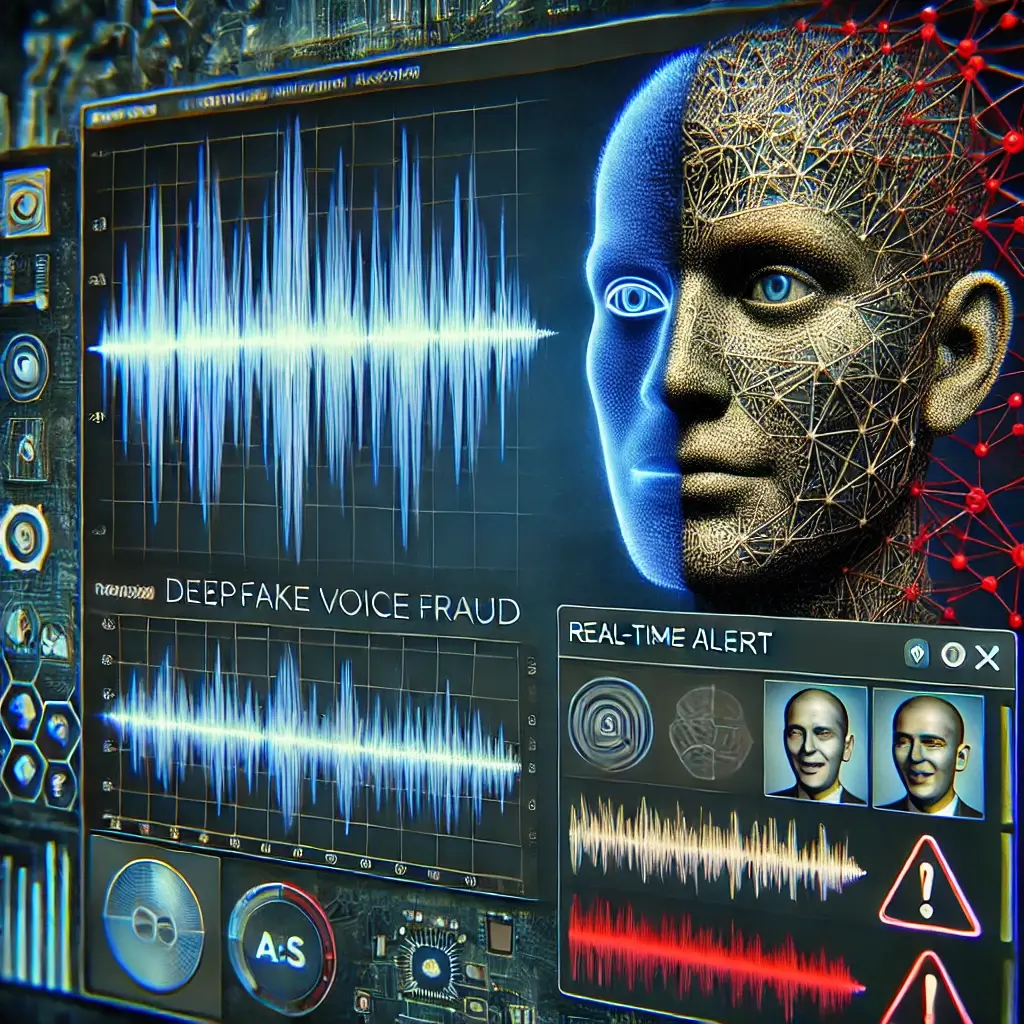The Voice You Hear May No Longer Be Real
The era of deepfake voice technology has moved beyond novelty. It is no longer confined to viral videos, movie dubbing, or entertainment content. It is now being deployed, systematically and maliciously, across telecommunications networks to impersonate individuals, executives, customer service agents, and even emergency officials in real-time phone conversations.
Unlike traditional voice spoofing, which relies on pre-recorded clips or automated prompts, deepfake voice uses generative AI trained on voice samples to create hyper-realistic audio facsimiles of any individual. Combined with caller ID spoofing and social engineering tactics, this threat represents one of the most sophisticated challenges facing modern voice infrastructure.
The result? High-trust impersonations that can bypass voice-based verification systems, manipulate victims into transferring funds, reveal sensitive information, or act on false commands, all while sounding completely legitimate.
What Makes Deepfake Voice So Dangerous?
Deepfake voice is uniquely dangerous because it doesn’t just trick voicemail systems or IVRs, it exploits human trust directly. The voice on the line may sound like your CEO, your spouse, your bank manager, or even your internal compliance officer.
These attacks are:
- Real-time: Generated live during ongoing calls
- Emotionally intelligent: Infused with urgency, warmth, fear, or concern
- Locally contextualized: Using regional dialects and speech patterns
- Nearly undetectable: To the untrained ear and basic call inspection tools
The Stakes:
- Enterprise Risk: Fraudulent authorizations, wire transfers, and internal breaches
- Public Sector Vulnerability: Emergency services, election operations, and agency impersonation
- Consumer Impact: Scams impersonating loved ones or officials leading to financial loss
Traditional robocall mitigation frameworks and STIR/SHAKEN attestation cannot detect who the voice belongs to, only whether the number is authenticated. That’s not enough anymore.
USTelco’s Solution: Deepfake Defense Built into AI Defender
To address this next-generation threat vector, USTelco has integrated deepfake-specific detection into its national telecom security platform: AI Defender.
AI Defender operates inline, on live voice streams, and applies advanced voice biometric anomaly detection, built specifically to expose real-time deepfake impersonation.
Core Capabilities of USTelco’s Deepfake Detection Module:
1. Temporal Fingerprinting
- Analyzes time-domain irregularities between phonemes
- Detects abnormal latency smoothing used by deepfake synthesis models
2. Spectral Signature Analysis
- Identifies frequency band manipulations caused by voice cloning and generative audio rendering
- Flags compression patterns common in deepfake generation (e.g., vocoder use)
3. Linguistic Variance Scoring
- Detects inconsistencies between speech pattern, pacing, and dialect expected for the speaker or region
- Measures deviation from prior known voiceprints (when applicable)
4. Emotion-Spectrum Modeling
- Measures affective congruency, i.e., does the emotion match the voice, cadence, and contextual content?
- Deepfakes often simulate surface emotion but fail deeper congruency models
5. Real-Time Threat Scoring and Enforcement
- Applies a weighted scoring system based on all anomaly layers
- Executes real-time enforcement actions based on configurable risk thresholds
Enforcement Actions Powered by AI Defender
When a suspected deepfake voice call is identified, AI Defender can automatically:
- Tag the session as fraudulent or high-risk
- Quarantine the call or redirect to security review
- Notify the operator’s fraud and compliance teams
- Terminate the call mid-session, if the policy permits
- Initiate traceback procedures across USTelco’s CLEC interconnects
This system operates without perceptible latency and is embedded within USTelco’s existing SIP infrastructure, offering national-scale voice security by default, not as an add-on.
Real-World Scenarios USTelco Defends Against
- CEO Impersonation (Business Email Compromise by Voice)
A deepfake voice calls a financial controller, authorizing an urgent transfer. AI Defender detects emotional mismatch and synthetic latency artifacts, terminates the session, and alerts security. - Emergency Services Interference
A fraudster mimics a local sheriff to report a fake hostage situation. AI Defender flags spectral compression anomalies and non-human cadence pacing, escalating to traceback and law enforcement. - Customer Service Abuse
A cloned voice mimics a subscriber to access sensitive billing data. AI Defender identifies voiceprint inconsistencies against previous interactions and locks the session before any data is exchanged.
Why USTelco Is Uniquely Positioned to Handle This Threat
Deepfake detection requires more than post-call analysis or third-party tools. It demands direct control of the media stream, real-time inspection, and an enforceable compliance backbone.
USTelco operates as:
- A licensed CLEC and IXC with national SIP infrastructure
- A STIR/SHAKEN-authorized carrier integrated with traceback enforcement
- A telecom security innovator with AI-powered inline voice inspection
Other providers sell call minutes. USTelco secures the voice ecosystem.
Deepfake Voice Is a National-Scale Risk, And USTelco Has the Solution
As deepfake voice becomes more accessible, powerful, and difficult to detect, every organization that relies on phone-based communication must ask a critical question:
Can you trust the voice on the other end of the line?
With USTelco AI Defender, the answer is yes.
We’ve engineered a proactive, real-time system that neutralizes deepfake calls before they can cause damage, protecting enterprises, public institutions, and consumers alike from this emerging threat.
Schedule a Voice Security Briefing
Learn how USTelco AI Defender can protect your organization from real-time voice impersonation.
Request a deepfake risk audit or technical consultation today.




